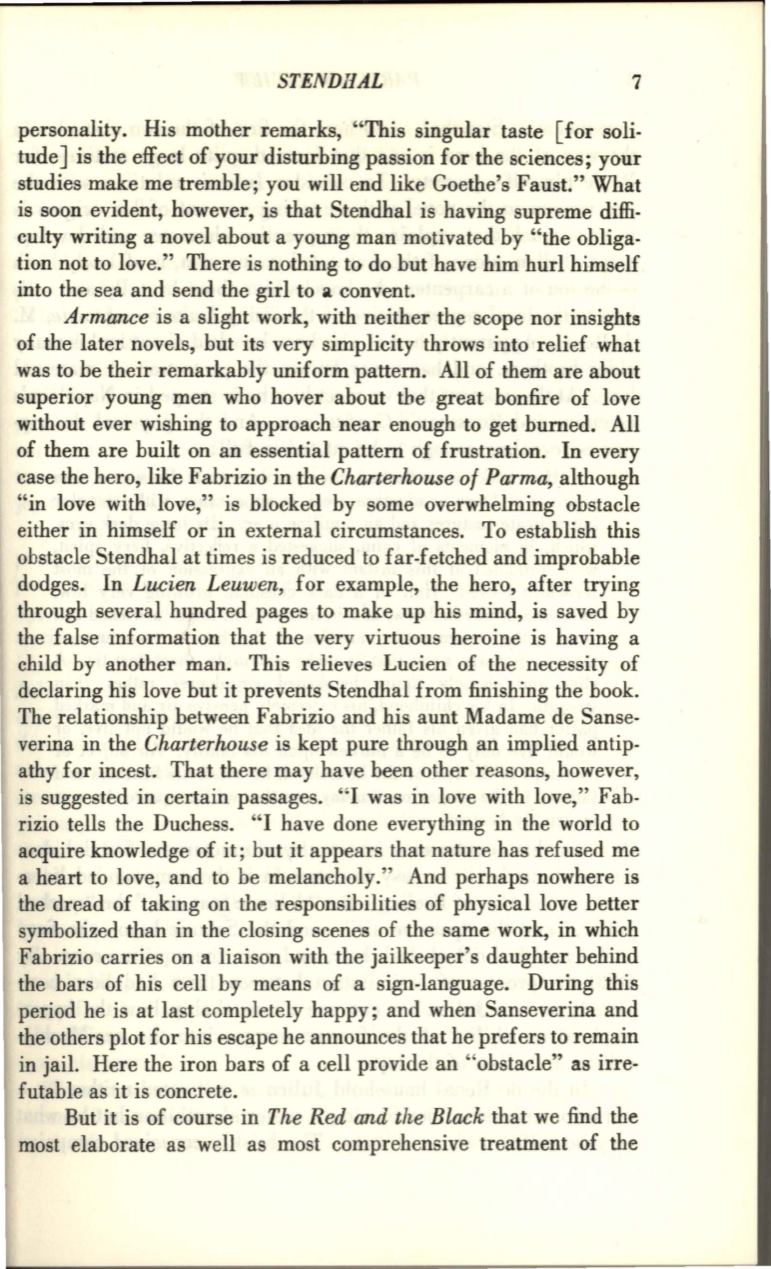
STENDIIAL
7
personality. His mother remarks, "This singular taste [for soli–
tude] is the effect of your disturbing passion for the sciences; your
studies make me tremble; you will end like Goethe's Faust." What
is soon evident, however, is that Stendhal is having supreme diffi–
culty writing a novel about a young man motivated by "the obliga–
tion not to love." There is nothing to do but have him hurl himself
into the sea and send the girl to a convent.
Armance
is a slight work, with neither the scope nor insights
of the later novels, but its very simplicity throws into relief what
was to he their remarkably uniform pattern. All of them are about
superior young men who hover about the great bonfire of love
without ever wishing to approach near enough to get burned. All
of them are built on an essential pattern of frustration. In every
case the hero, like Fabrizio in the
Charterhouse of Parma,
although
"in love with love," is blocked by some overwhelming obstacle
either in himself or in external circumstances. To establish this
obstacle Stendhal at times is reduced to far-fetched and improbable
dodges. In
Lucien Leuwen,
for example, the hero, after trying
through several hundred pages to make up his mind, is saved by
the false information that the very virtuous heroine is having a
child by another man. This relieves Lucien of the necessity of
declaring his love but it prevents Stendhal from finishing the book.
The relationship between Fabrizio and his aunt Madame de Sanse–
verina in the
Charterhouse
is kept pure through an implied antip–
athy for incest. That there may have been other reasons, however,
is suggested in certain passages. " I was in love with love," Fab–
rizio tells the Duchess. "I have done everything in the world to
acquire knowledge of it; but it appears that nature has refused me
a heart to love, and to be melancholy." And perhaps nowhere is
the dread of taking on the responsibilities of physical love better
symbolized than in the closing scenes of the same work, in which
Fabrizio carries on a liaison with the jailkeeper's daughter behind
the bars of his cell by means of a sign-language. During this
period he is at last completely happy; and when Sanseverina and
the others plot for his escape he announces that he prefers to remain
in jail. Here the iron bars of a cell provide an "obstacle" as irre–
futable as it is concrete.
But it is of course in
The Red and the Black
that we find the
most elaborate as well as most comprehensive treatment of the


